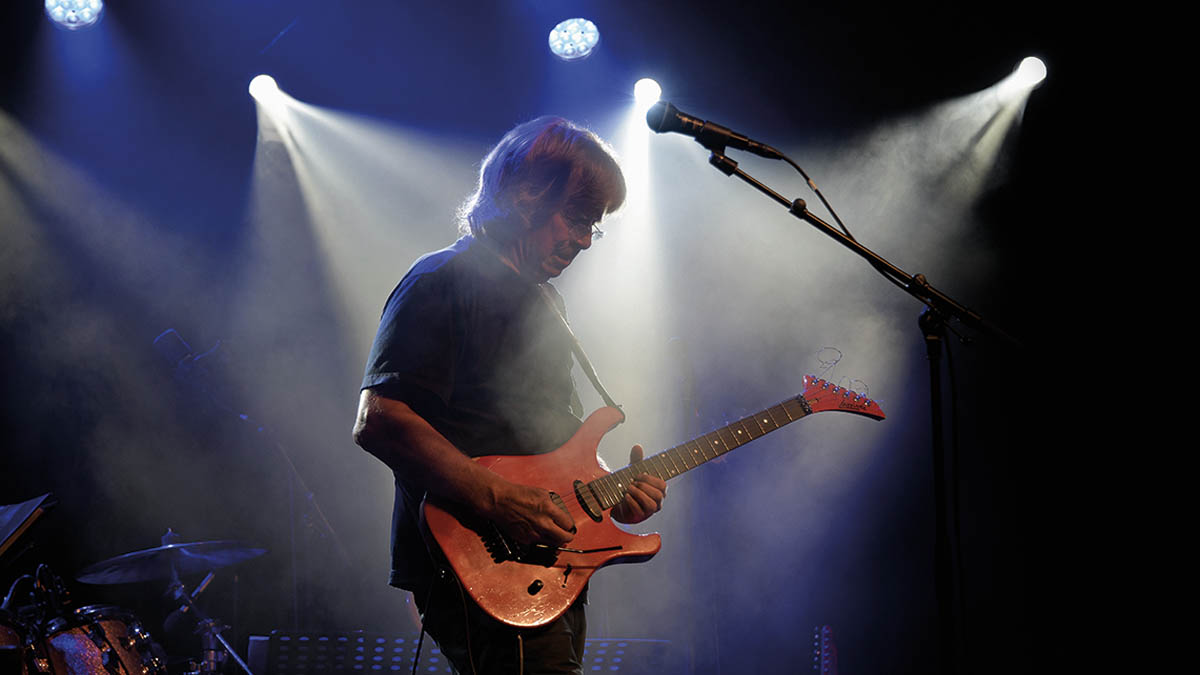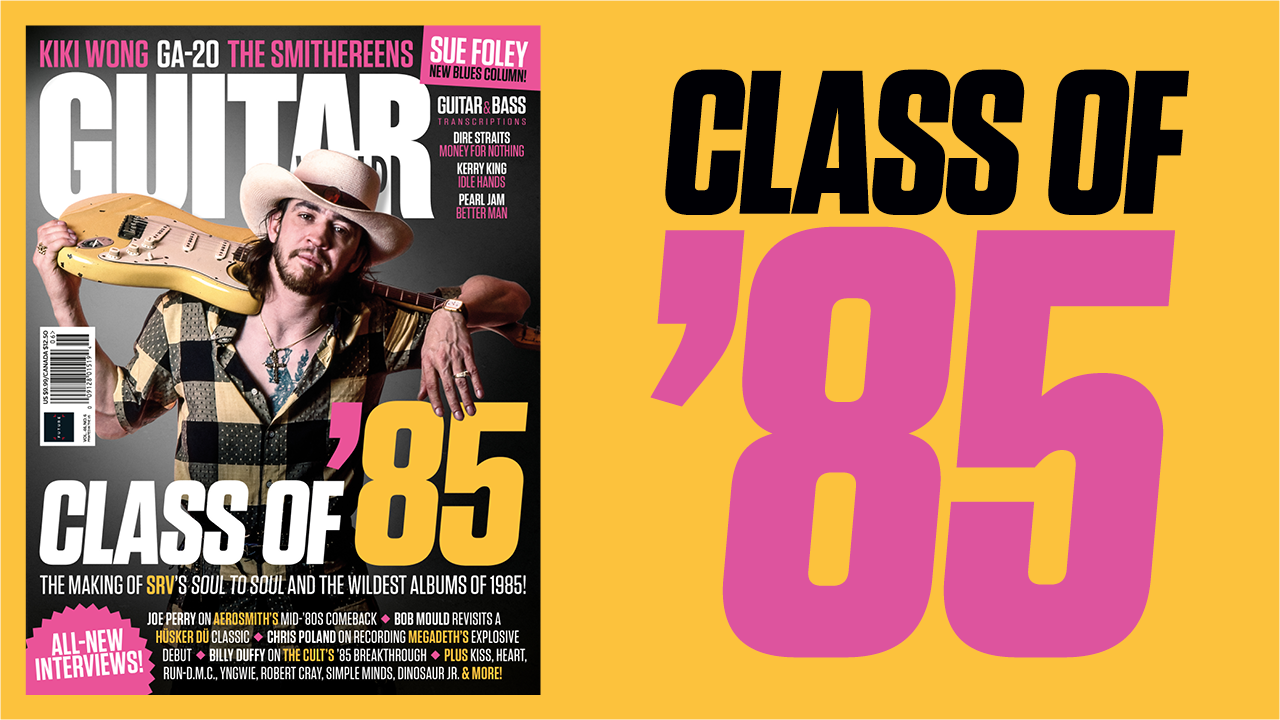ABBA guitarist Janne Schaffer: “You can hear a lot of heavy rock guitars in the first and second albums. We’d been listening to Deep Purple”
Schaffer takes us behind the scenes of the biggest hit-making machine of the '70s

The release of a new ABBA album, Voyage, their first new material in 40 years, is the surprise comeback of 2021. And it brings back wonderful memories for the guitarist who played on the band’s biggest hits in the '70s and early '80s.
“ABBA sold over 380 million records,” says Janne Schaffer, “and I’m on over half of those, which is pretty cool!”
In that imperial phase, ABBA recorded and released 98 songs – 50 which featured the Stockholm-born session guitarist and jazz virtuoso who hung out with Pink Floyd and Jimi Hendrix on their first Swedish tours before hooking up with ABBA in 1972.
Now, as he looks back on his years as a part of that record-breaking hit factory, Janne says: “It was always good music. And the new songs sound great. I think the comeback will be a huge success.”
What were the most guitar-heavy tracks you recorded with ABBA?
“There are three that come to mind. Rock’n Roll Band, Watch Out and King Kong Song, which are from the first and second albums. If you listen to them, you can hear a lot of heavy rock guitars in there. We’d been listening to Deep Purple and similar things.
“On Watch Out, I was using a guitar synthesizer for the intro... You can hear the octave effect on that little phrase I repeat at the beginning. We had a lot of fun in the studio, trying different things out. Early on Björn [Ulvaeus,] and Benny [Andersson] weren’t exactly sure which direction ABBA should move to. From the third album onwards, I think Benny had more of an understanding of how he wanted the band to sound...”
Get The Pick Newsletter
All the latest guitar news, interviews, lessons, reviews, deals and more, direct to your inbox!
SOS is one I’m proud of playing on – I’d say it’s one of their best tunes
What other famous tracks did you end up playing on?
“There’s quite a few! Songs like Ring, Ring, Waterloo, Mamma Mia – that one was an overdub – as well Bang-A-Boomerang, Voulez Vous, I Have A Dream. In 1977, I played on a track called If It Wasn’t For The Nights, which I like very much, though it doesn’t get played as much. It was more disco-oriented, with a lot of guitar overdubs. And actually, there were a lot of overdubs with ABBA.
“SOS is one I’m proud of playing on – I’d say it’s one of their best tunes. I also played a version with Swedish lyrics that was on one of (co-lead singer) Agnetha Fältskog’s solo albums, where you can hear the guitar parts a little better. It’s a piano-oriented tune, but complemented by guitar.
“There’s a song called Eagle that I really enjoyed recording. And I believe I played on Fernando, just from how it all got registered and what I was told, but I’m not really one hundred per cent sure. I also played on Knowing Me, Knowing You. For a while, I thought I played on Does Your Mother Know, but that was another fantastic guitarist they used called Lasse Wellander.”
Waterloo is essentially a glam rock song. Do you remember what the band were listening to back then and what you used for the sessions?
“I have no idea if the members listened to glam rock, to be honest. But we listened to a lot of The Beach Boys. Everyone knew that Brian Wilson was a great songwriter. Benny had a way of taking his inspirations and making them his own. As Good As New, for example, had some influence from the Bee Gees, even though it’s musically different.
“I helped a little bit with the arrangement for Waterloo, which was fantastic. I saw the whole thing starting and growing, and immediately knew it would be something special. Most of that music was arranged in the studio. I actually still have the guitar I used for Waterloo. It was my 1959 Gibson Les Paul. I’ve had to hide that instrument because it’s so valuable now! And I was using an Ampeg amp at the time.
“I don’t think there were any pedals involved, though occasionally I might have tried one of the MXR phasers. Actually, there’s an ABBA tune called So Long and for that I used a Morley echo pedal that I could push down for extra swirly sounds. You can hear it at the beginning.”
Did you play on Dancing Queen? Your name is credited on one of the later sessions.
“It is, though even I’m not absolutely sure I played on that. But I do remember being at Glen Studio and being asked to put some rhythm tracks down. Again, it’s hard to be sure! Some sessions I can remember very well, and others less so. I’m registered on over 5,000 tunes and only 50 of them are ABBA. And a lot of those other recordings don’t sound like ABBA. I always try to invent my own musical language in every project.”
I was very honoured to be involved in these songs, it gives me a lot of pleasure and makes me feel like I had an involvement in their creative progression
There are some interesting voicings and movements in ABBA’s music. How much did chordal theory help you get the job done?
“It was important to know my chord theory because I played together with Benny all the time, trying to find the right things to fit his piano playing. Everything would start with his idea of how the melodies sounded and then how we added to it. I wouldn’t say it was normal guitar chords and it took a bit of figuring things out, but I was used to working like that.
“I was very honoured to be involved in these songs, it gives me a lot of pleasure and makes me feel like I had an involvement in their creative progression. In 1973, when they were recording Ring, Ring, I released my first solo album which went to number one for six weeks.
“I was a little scared they wouldn’t want to have me on the records because I’d started my own career at the time. I explained that I wasn’t making the same kind of music as them, and therefore really hoped to continue recording with them because it was always good quality and highly creative music.”
Do you still mainly use Les Pauls these days?
“Well, back then, Les Pauls were very much the guitar. I had some Fenders as well – for example, on As Good As New, I was using a Telecaster. And on I Have A Dream I used an electric sitar, so I was always open to using different guitars. But nowadays, it’s very rare for me to use my Gibsons, I mainly work with Larrivée, a Canadian French brand that I like very much. Those instruments are mainly what I use on my recordings today.”
What parting tips can you offer other session guitar hopefuls out there?
“You have to be very versatile and know a lot about music theory. I listened to a lot of jazz and played with Swedish radio jazz groups, and also worked with people from classical backgrounds, which really helped.
“I also learned very quickly that you have to be very inventive on the spot and have open ears. Nobody is perfect all the time, though – sometimes there might be a tune that simply doesn’t suit your way of playing. It’s worth keeping that in mind.”
- Voyage is out now on Capitol.
Amit has been writing for titles like Total Guitar, MusicRadar and Guitar World for over a decade and counts Richie Kotzen, Guthrie Govan and Jeff Beck among his primary influences as a guitar player. He's worked for magazines like Kerrang!, Metal Hammer, Classic Rock, Prog, Record Collector, Planet Rock, Rhythm and Bass Player, as well as newspapers like Metro and The Independent, interviewing everyone from Ozzy Osbourne and Lemmy to Slash and Jimmy Page, and once even traded solos with a member of Slayer on a track released internationally. As a session guitarist, he's played alongside members of Judas Priest and Uriah Heep in London ensemble Metalworks, as well as handled lead guitars for legends like Glen Matlock (Sex Pistols, The Faces) and Stu Hamm (Steve Vai, Joe Satriani, G3).
“My guitar tech ran in and said, ‘Hey, you want to meet Pete?’ I was too scared”: The Smithereens’ love affair with The Who goes way back – yet when guitarist Jim Babjak got the chance to meet Pete Townshend, he turned it down
“Every tour was the best I could have done. It was only after that I would listen to more Grateful Dead and realize I hadn’t come close”: John Mayer and Bob Weir reflect on 10 years of Dead & Company – and why the Sphere forced them to reassess everything






![John Mayer and Bob Weir [left] of Dead & Company photographed against a grey background. Mayer wears a blue overshirt and has his signature Silver Sky on his shoulder. Weir wears grey and a bolo tie.](https://cdn.mos.cms.futurecdn.net/C6niSAybzVCHoYcpJ8ZZgE.jpg)

![A black-and-white action shot of Sergeant Thunderhoof perform live: [from left] Mark Sayer, Dan Flitcroft, Jim Camp and Josh Gallop](https://cdn.mos.cms.futurecdn.net/am3UhJbsxAE239XRRZ8zC8.jpg)






